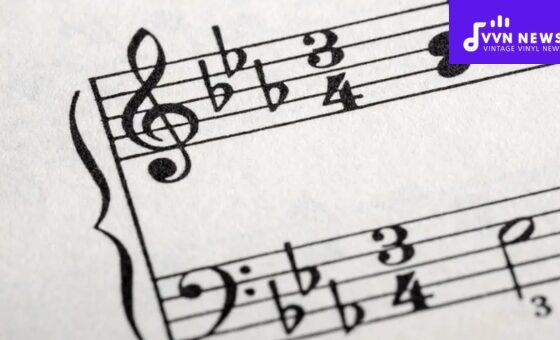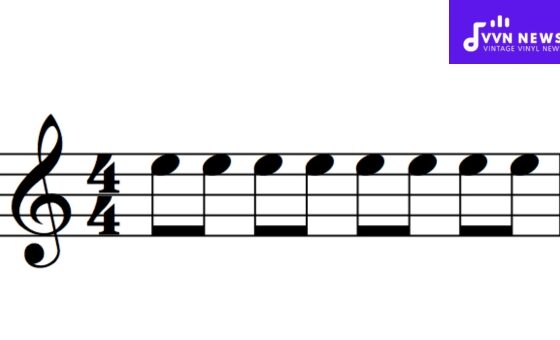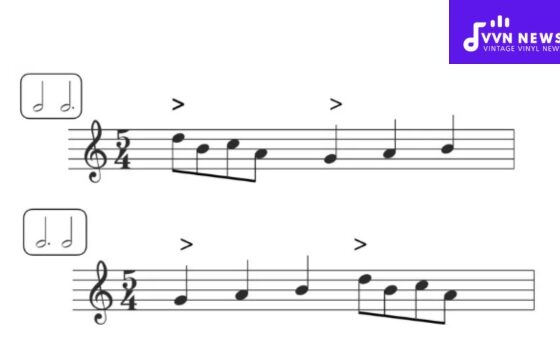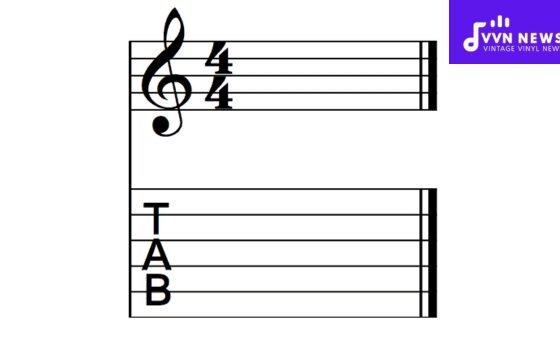A world of melody, rhythm, and harmony awaits those who choose to delve into the thrilling sphere of orchestral music.
It’s a symphony where every component holds an integral part. From the elegant sweep of violin bows to the resonant bellow of double basses, each instrument plays a vital role in an orchestra.
Today, let’s venture through this splendid world and explore the fascinating range of instruments of the orchestra.
These instruments will gain you not just knowledge but also an appreciation for their respective roles in creating a symphony.
Each instrument brings its unique tonality contributing to the beautiful, unified sound commonly associated with orchestras.
In this journey of exploring musical instruments, I assure you it’s not only informative but exciting too!
Get ready to uncover a new perspective on the mesmerizing realm of orchestral music as we take a closer look at these wonderful instruments.
What is an orchestra and its significance in music?
An orchestra is a large ensemble of musicians who come together to perform a wide range of musical compositions.
It serves as the foundation of symphonic music, showcasing the combined talent and expertise of numerous instrumentalists. The word “orchestra” itself originates from ancient Greek, meaning “a place for dancing.”
Origins and Evolution
The modern orchestra as we know it today can be traced back to the 17th century. Its structure has since evolved and expanded, incorporating new instruments and styles over time.
Orchestras can vary in size, ranging from chamber orchestras with a few musicians to full-scale symphony orchestras consisting of over 100 members.
Unity in Diversity
The purpose of an orchestra is to create a harmonious blend of different instrumental voices. Each instrument belongs to one of four main families: strings, woodwinds, brass, and percussion.
These families consist of various instruments with unique timbres and playing techniques.
Also Read: How To Clean Your Flute [Keep Your Instrument Shiny & Sounding Great]
The Conductor’s Role
At the helm of an orchestra stands the conductor—a highly skilled and charismatic leader who guides the musicians through their performance.
The conductor ensures that every instrument plays in unison, bringing out the desired emotions and dynamics from the score.
Expressive Power
Orchestral music possesses remarkable expressive power due to the vast range of tones and colors produced by different instruments.
From sweeping violins creating delicate melodies to booming brass sections evoking grandeur, each instrument adds its voice to create a rich tapestry of sound.
Versatility
Orchestras have a remarkable versatility that allows them to perform music from various genres, styles, and periods.
They can bring classical masterpieces to life as well as tackle contemporary pieces or even venture into film scores or popular music arrangements.
Orchestras play a vital role in music by bringing together diverse instrumental voices to create truly captivating performances.
Whether performing in concert halls, opera houses, or film studios, orchestras continue to captivate audiences with their majestic sound and awe-inspiring performances.
Classification of Orchestra Instruments

The instruments of the orchestra can be classified into four main categories: strings, woodwinds, brass, and percussion.
Each category offers a distinct sound and adds its unique flavor to the overall orchestral composition. Let’s take a closer look at each category and the instruments that make it up.
1. Strings
The strings section forms the backbone of the orchestra, providing a lush and melodic foundation. These instruments are played by either plucking or using a bow to vibrate their strings.
- The violin is the smallest and highest-pitched instrument in the string family. It produces a rich, vibrant sound.
- The viola, slightly larger than the violin, has a warm and mellow tone that complements the violin.
- The cello produces deep, resonant tones and is held between the musician’s legs while playing.
- The double bass is the largest instrument in the orchestra and produces powerful low notes.
Also Read: Best Practice Duration For Your Instrument? [Master Your Talent]
2. Woodwinds
The woodwind section includes instruments made out of wood or metal that require blowing air through them to produce sound.
- The flute is known for its bright and agile sound, often associated with nature-inspired melodies.
- The clarinet has a versatile range, capable of producing both smooth, lyrical lines and expressive leaps.
- The oboe emits a unique reedy timbre with its double-reed mouthpiece.
- The bassoon, with its deep resonant voice, provides rich harmonies in an orchestral setting.
3. Brass
The brass section boasts powerful instruments that create bold and majestic sounds by buzzing their lips into mouthpieces.
- The trumpet, known for its brilliance and penetrating power, plays soaring melodies and punctuates accents.
- The French horn produces warm tones with delicate nuance and is often associated with grand, majestic themes.
- The trombone, with its slide mechanism, can create smooth glissandos and bold fanfare-like bursts of sound.
- The tuba provides a deep and rich foundation to the brass section, producing the lowest notes in the orchestra.
4. Percussion
The percussion section consists of instruments played by striking or shaking to create rhythmic textures.
The section includes various instruments such as:
- The timpani is a set of large kettle drums that produce resonant pitches.
- The snare drum creates sharp and crisp sounds that punctuate rhythms.
- The cymbals are used for crashes and shimmering effects.
- The xylophone is known for its bright tones and melodic capabilities.
Each instrument category contributes a unique timbre and character to the orchestral sound.
When these instruments come together under the skillful guidance of a conductor, they create an extraordinary tapestry of sound that can stir emotions, transport listeners through time and space, and captivate audiences around the world.
Also Read: Flute Vs Recorder [Which Instrument Is Best For You?]
Strings
The string family of instruments in the orchestra consists of four primary members: the violin, viola, cello, and double bass.
These instruments are played by either plucking the strings with fingers (pizzicato) or using a bow made of horsehair to create sustained notes and expressive melodies.
1. Violin
The violin is the smallest and highest-pitched instrument in the string family. Its exquisite sound resonates with both warmth and brilliance.
It has four strings tuned in fifths (G-D-A-E), which are played by drawing the bow across them or by pressing them against the fingerboard while plucking.
One of the most expressive instruments, the violin can produce a wide range of tones from dazzling virtuosic passages to tender, soul-stirring melodies.
Its versatility makes it an essential part of orchestral music as well as diverse musical genres like classical, jazz, and folk.
2. Viola
Slightly larger than the violin, the viola emits a warm and mellow tone that complements its smaller sibling.
It features the same tuning as the violin but produces a deeper sound due to its larger body size and thicker strings.
With its rich timbre and tenor-like quality, the viola often forms a bridge between higher-stringed instruments and lower-register instruments in harmonies.
The viola has a beautiful singing voice that excels in lyrical passages while providing essential middle-range support for ensemble playing.
Also Read: Types Of Flutes [Explore The Rich Variety Of This Instrument]
3. Cello
The cello is renowned for its deep, resonant voice—the closest instrument to echoing human vocal range—embodying both power and expressiveness. It is held between the musician’s legs while playing using an endpin on which it rests.
Thanks to its larger size compared to previous string instruments, cellists can produce incredibly lush tones with remarkable sustain.
The soulful sounds emanating from this instrument have captivated audiences for centuries and continue to do so across musical genres.
4. Double Bass
The double bass, also known as the contrabass, is the largest instrument in the string family. Its strings are tuned in fourths (E-A-D-G) and produce thunderous, resonant bass notes that form the foundation of the orchestra’s sound.
Often played with a bow, but also struck or plucked, the double bass provides a powerful and sonorous backbone to orchestral compositions and jazz ensembles alike.
Its deep, earth-shaking tones create a sense of grounding and rhythm essential in shaping the overall sonic landscape.
These extraordinary string instruments showcase an incredible range of expression, from sweet lyrical lines to dramatic virtuosic flourishes.
Through their versatility and ability to convey emotion like no other, violins, violas, cellos, and double basses add an undeniable richness to any orchestral composition or musical performance they contribute to.
Woodwinds: A Symphony of Breath and Vibrance

Woodwind instruments encompass a diverse family of instruments that produce sound through the vibration of air within tubes made of wood or metal.
From the ethereal sounds of the flute to the expressive melodies of the clarinet, each instrument offers its unique voice to the enchanting world of orchestral music.
1. Flute
- The flute is a graceful and delicate instrument with a slender body and finger holes along its length.
- It is played by blowing across a small opening called the embouchure hole, creating a stream of air that causes the instrument’s air column to vibrate.
- Its sound possesses a shimmering and bright quality that can evoke feelings of serenity or soaring excitement.
- Flute players achieve their wide range by manipulating their lips, tongue position, and embouchure control.
- Known for its agility, the flute often takes on lyrical melodies, trills, and rapid passages with ease.
2. Clarinet
- The clarinet boasts a distinctive sound produced by a single reed attached to a mouthpiece at one end.
- Played by pressing on keys covering its tone holes while blowing through its mouthpiece, it produces melodic lines rich in warmth and expression.
- Clarinets offer versatility across genres from classical to jazz to folk due to their wide range and ability to play legato or agile staccato lines.
- They come in different sizes and pitches like B♭ clarinets (used commonly in orchestras), A clarinets (slightly longer for a darker tone), E♭ clarinets (higher-pitched), among others.
Also Read: Instrument Miking Techniques To Capture The Best Sound 2025
3. Oboe
- The oboe stands out with its double-reed mouthpiece comprising two pieces of cane bound together.
- By blowing air between these reeds, musicians create a unique and captivating sound that resembles a plaintive, singing quality.
- Oboes are known for their ability to express both the utmost beauty and sorrow within melodies.
- The instrument features a complex key system operated by the player’s fingers to vary pitch, dynamic range, and timbre.
- Its unwavering presence and piercing tone make it a prominent soloist in symphonies.
4. Bassoon
- The bassoon is characterized by its large size, complex key system, and distinctive double-reed mouthpiece.
- It produces deep, rich tones that add depth and gravity to an orchestral ensemble.
- Bassoons possess an impressive range that spans from delicate melodies to powerful bass lines that can inspire awe.
- With its unique blend of dark timbre and agility, the bassoon plays an essential role in conveying a wide range of emotions within orchestral music.
Woodwind instruments offer a captivating assortment of sounds within the orchestra. From the ethereal whispers of the flute to the expressive storytelling of the clarinet, oboe, and bassoon – these instruments are capable of invoking vivid emotions and adding depth to any piece.
They take center stage or blend harmoniously with other sections, woodwinds bring their distinctive voice to create enchanting melodies that resonate with listeners worldwide.
Brass Instruments
The brass section of the orchestra is known for its vibrant, bold, and resonant sounds. The instruments in this family are made of brass or other metals and produce sound by buzzing the musician’s lips into a mouthpiece.
Let’s explore each instrument in detail.
1. Trumpet
The trumpet is a cylindrical brass instrument with three valves that alter the length of the tubing, allowing players to produce a variety of pitches.
It has a bright and piercing sound that can cut through the orchestra with ease. Trumpets are often used to play fanfares, melodies, and powerful solo passages.
2. French Horn
The French horn is a coiled brass instrument with rotary valves operated by the player’s left hand. This unique valve mechanism allows for seamless transitions between different pitches.
The French horn has a mellow yet versatile tone that can evoke both grandeur and lyrical beauty. It often plays harmonies and provides elegant, soaring melodies.
3. Trombone
The trombone is recognizable for its long U-shaped slide, which allows players precise control over pitch and volume.
This versatile instrument can produce smooth glissandos (sliding from one note to another) as well as powerful bursts of sound in its lower register.
Trombones add depth, warmth, and richness to orchestral compositions.
4. Tuba
The tuba is the largest and lowest-pitched member of the brass family. Its deep, rumbling sound provides a solid foundation for the entire ensemble.
Tubas have several valves that allow players to access different pitches within their harmonic series.
With its enormous size, the tuba creates thunderous basslines that resonate through concert halls.
Brass instruments excel at projecting sound across large spaces due to their impressive power and carrying capacity.
They infuse orchestral music with an unmistakable sense of strength, excitement, and grandeur while also contributing to delicate and nuanced musical moments.
Playing bold fanfare or providing a rich harmonic texture, trumpets, French horns, trombones, and tubas bring a dynamic presence to any orchestra.
Percussion

The percussion section in the orchestra is responsible for adding rhythm, texture, and energy to the music.
It encompasses a wide array of instruments, each with its unique sound and purpose. Let’s explore some of the key percussion instruments found in the orchestra.
Also Read: Guide To Applying EQ Cheat Sheet On Various Instruments 2025
1. Timpani
Also known as kettle drums, timpani are large, bowl-shaped drums made from copper or fiberglass.
They have a range of pitches and are tuned using foot pedals, allowing the performer to change the tension on the drumheads.
The timpani produces deep and resonant tones that add drama and impact to the music.
2. Snare Drum
The snare drum is a versatile instrument with a distinctive “crack” sound. It consists of a drum body with tightly stretched wires (the snare) on its bottom side.
When struck with drumsticks, the snares vibrate against the drumhead, creating a sharp and crisp sound that can evoke excitement or accentuate rhythmic patterns.
3. Cymbals
Cymbals are metallic plates that clash together to create shimmering, crashing sounds. They come in various sizes and thicknesses, each producing a different tone.
Performers can strike them together or use special techniques like rolling or crashing to create various effects ranging from delicate splashes to thunderous crashes.
4. Xylophone
The xylophone is a melodic percussion instrument consisting of wooden bars arranged in pitch order.
Each bar is struck with mallets to produce distinct ringing tones. The xylophone’s bright and percussive sound adds color and playfulness to orchestral compositions.
The percussion section provides an essential rhythmic foundation and adds dynamic and textural interest to orchestral music.
It’s the thunderous rolls of the timpani, the sharp cracks of the snare drum, the shimmering crashes of cymbals, and the playful melodies of the xylophone, and percussion instruments that contribute to a vibrant and captivating sonic landscape.
FAQ About Instruments Of The Orchestra
What is the role of the conductor in an orchestra?
The conductor leads and guides the orchestra, ensuring each instrument plays together in sync and brings out the desired emotions and dynamics from the score.
How are woodwind instruments different from each other?
Woodwind instruments vary in size, shape, and sound due to their unique designs. Flutes are made of metal or wood, while clarinets have a single-reed mouthpiece. Oboes use a double reed, and bassoons have a larger body for deeper tones.
What makes brass instruments powerful?
Brass instruments create sound by buzzing lips into a mouthpiece. Their design allows for amplification and resonance, resulting in bold and majestic tones that can cut through an ensemble.
What is the function of percussion instruments in an orchestra?
Percussion instruments add rhythmic textures, accents, and special effects to orchestral music. They include drums for beats, cymbals for crashes, timpani for tonal melodies, and xylophones for bright notes.
How do all these different instruments come together to create harmony?
The diverse range of instrument families combines their unique sounds to create rich harmonies in an orchestra. The strings offer lush melodies, woodwinds provide contrasting timbres, brass adds power in moments of grandeur, while percussion accents rhythms and provides color and dynamics throughout the composition.
Conclusion
The instruments of the orchestra are the building blocks that come together to create awe-inspiring symphonies and enchanting musical experiences.
From the delicate melodies of the violin to the thunderous resonance of the double bass, each instrument adds its unique voice to the ensemble.
The strings, woodwinds, brass, and percussion sections combine their diverse sounds and techniques under the direction of a conductor to create harmonious masterpieces.
So next time you listen to an orchestral composition, take a moment to appreciate the incredible craftsmanship and artistry of these remarkable instruments that bring music to life.








